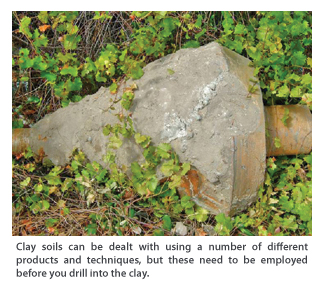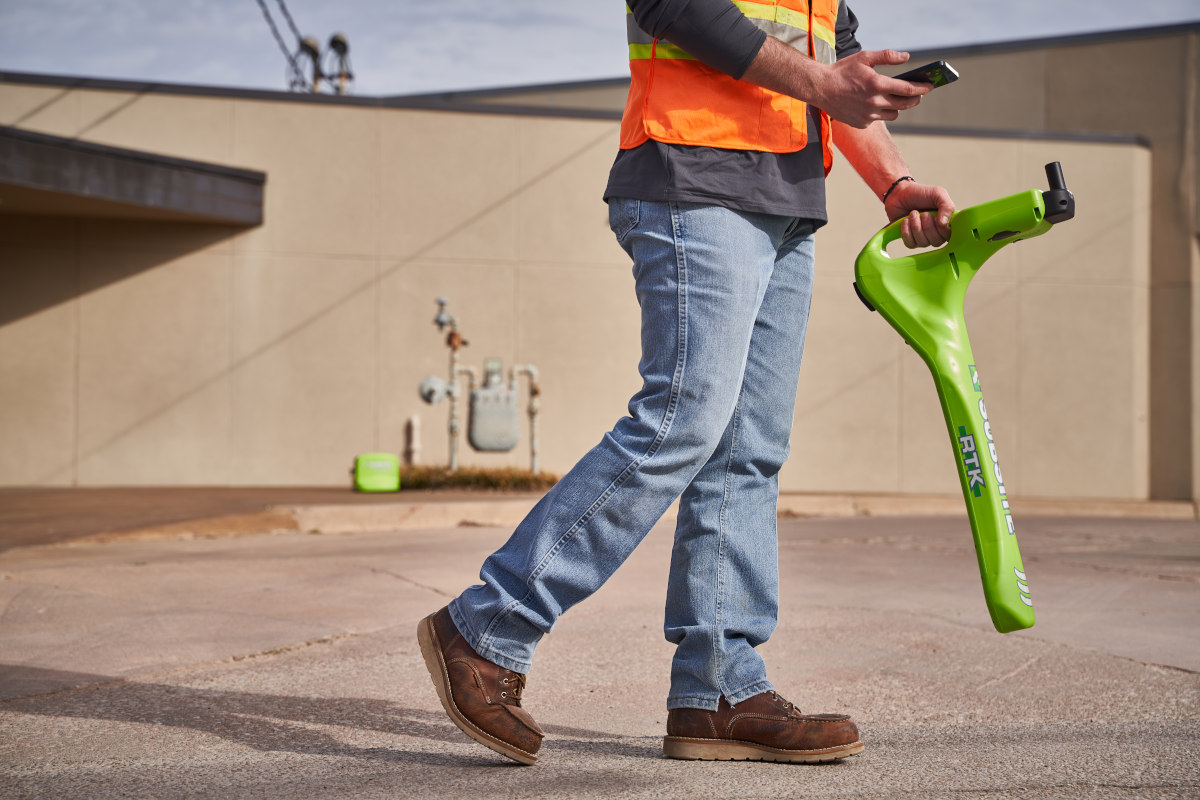From the Field
April 1, 2009
 I receive more phone calls from drillers who are heading out to areas of the country that have clay soils, asking for help. Dealing with clay soils can present a multitude of challenges so the calls are not at all unexpected. Clay soils can be dealt with using a number of different products and techniques but these need to be employed before you drill into the clay and therein lies the rub.
I receive more phone calls from drillers who are heading out to areas of the country that have clay soils, asking for help. Dealing with clay soils can present a multitude of challenges so the calls are not at all unexpected. Clay soils can be dealt with using a number of different products and techniques but these need to be employed before you drill into the clay and therein lies the rub. Many times clay sneaks up on us after we drill through sands or silty soils that caused no problems and are not prepared for it. We may have the right product in the trailer but not in the mud. Before the torque climbs and the pressure builds, let’s take inventory and see what we can do to prevent the problems that are waiting down there.
First, there are many different types of clay and they tend to respond differently to different drilling fluid additives. That is why your drilling fluid company has a variety of these additives to work with. When planning the bore, discuss the contingencies with your drilling fluid sales representatives. They may have some experience drilling in the area where you are at or planning on going.
Clay likes water. There, that’s the problem. So what do we do? We are drilling with fluid that is more than 90 percent water and there is no getting around that. So what do we do? Do we add something to the drilling fluid that will keep the available water away from the clay or do we add something that will have the effect of negating the effects of water on the clay? We may do either or both, depending on the nature of the clay.
Let’s start with a common scenario. We start at the surface in sandy or coarse soils. Coarse soils need controlled water loss. Controlling water loss in coarser soils prevents loosening and washing the material into the borehole. After we have checked the pH of the water and added soda ash and high-yield bentonite, we should add a water loss/filtrate control additive like polyanionic cellulose (PAC). PACs bind with the bentonite to create a tighter seal in the wall cake, which prevents the free water in the drilling fluid from escaping the borehole out into the formation.
This product addition can help you drill out of the sandier soils into the clay. A lot of the alluvial environments where you find clays have stringers of both silty sand and clay, so the PAC will come in handy through out this type of bore. Even if you move completely out of the coarser soils, the PACs will help in clay by continuing to lower the amount of water getting to the clay and it adds lubricity.
You can lower water loss to almost nothing but it is costly to cut it down to zero. It is much better to add something that will treat the clay when the water gets to it. By “treating” the clay you can do several things:
- Coat the clay so that it does not stick to drill steel
- Inhibit the clay from swelling
- Flocculate the clay so that it flows out of the hole
- Thin the clay so that it does not stick together
Remember that there are a wide variety of clay types and the different types react differently to additives. Some work well with one and better with another. Your drilling fluids representative has the experience to help you pick the right type.
- Surfactants: We call them drilling detergents and they coat the surface of the clay particles when the clay is cut by the bit. By coating the clay cuttings, you help prevent them from sticking to each other and balling and help prevent them from sticking to the bit and drill steel. This is the basic low-cost additive for building a drilling fluid system that will help prevent the clay from starting to do what it wants to do — stick.
- Polymers: This is the stuff that started it way back when — partially hydrolyzed poly acrylimides or PHPA. These are long chain “polymers” that wrap themselves and their molecular charges around the clay cuttings and keep them from swelling. This is called inhibition. It worked in the 1960s and it still works. Keep in mind that clays are different. PHPAs that work on one clay may not work so well on another. PHPAs may be used with PACs and drilling detergents. It is a combination that has served us well for many years.
- Flocculants: These have the effect of partially binding the clay particles together into a flowable liquid slurry. Getting the clay cuttings to flow solves the biggest issue we usually have with clay soils. That is, getting the clay out of the hole without it re-agglomerating on the sides of the borehole and to the drill stem or bit. Specific drilling fluid flocculants can work well for this application. Drilling fluid flocculants can be used with drilling detergents and PACs.
- Thinners: These are also called dispersants or de-flocculants. They perform a wide variety of functions in drilling fluids, including being used in the manufacture of some bentonite products. Technically they neutralize the charges on clay particles and reduce viscosity. This can be really handy when dealing with some clays that do not respond to inhibitors or flocculants. Thinners can be used with PACs and drilling detergents.
All drilling fluid additives should be used according to the manufacturer’s instructions. Most manufacturers have the usage instructions on the label and on the technical data sheets which can be found on their Web sites.
These are the most common drilling fluid additives used to fight clay drilling problems. These are readily available from your drilling fluid distributor. You will do yourself a big favor by having these products on the jobsite and available to add to the drilling fluid mix before — or at least when — you drill in clay.
I am asked quite often about having bentonite in the mud when drilling in clay — Why should I use clay to drill in clay? This is a good question. There are a couple of reasons to keep at least some high-yield bentonite in the drilling fluid. The main one is that there is no clay treating additive that has any carrying capacity or “gel strength.” When we turn off the pump we need something to keep the cuttings suspended. High-yield bentonite will do this — additives do not. You do not need to add a great deal of bentonite to remove the cuttings, 10 to 15lbs/100 gals water should be enough to carry the cuttings and the additives.
Another important fact to keep in mind when you are drilling in clay is the amount of fluid that you are pumping. The rule of thumb is for drilling in clay is four to five times the soil volume that is cut due to the small size of the cuttings. This is a good rule to follow. Check with your drilling fluid company for the types of additives they offer for dealing with clay. You may find that there are several that you are not aware of that may come in handy on that next bore.
Randy Strickland is group manager for CETCO Drilling Products, which is headquartered in Arlington Heights, Ill.





